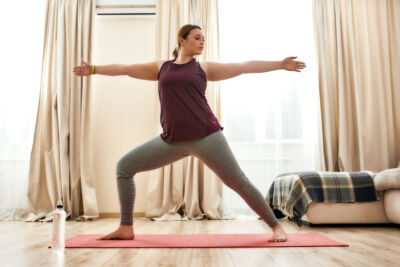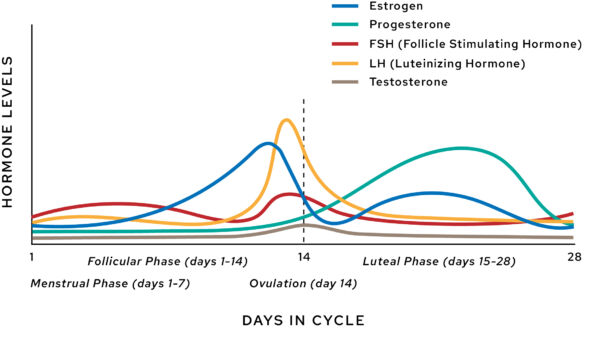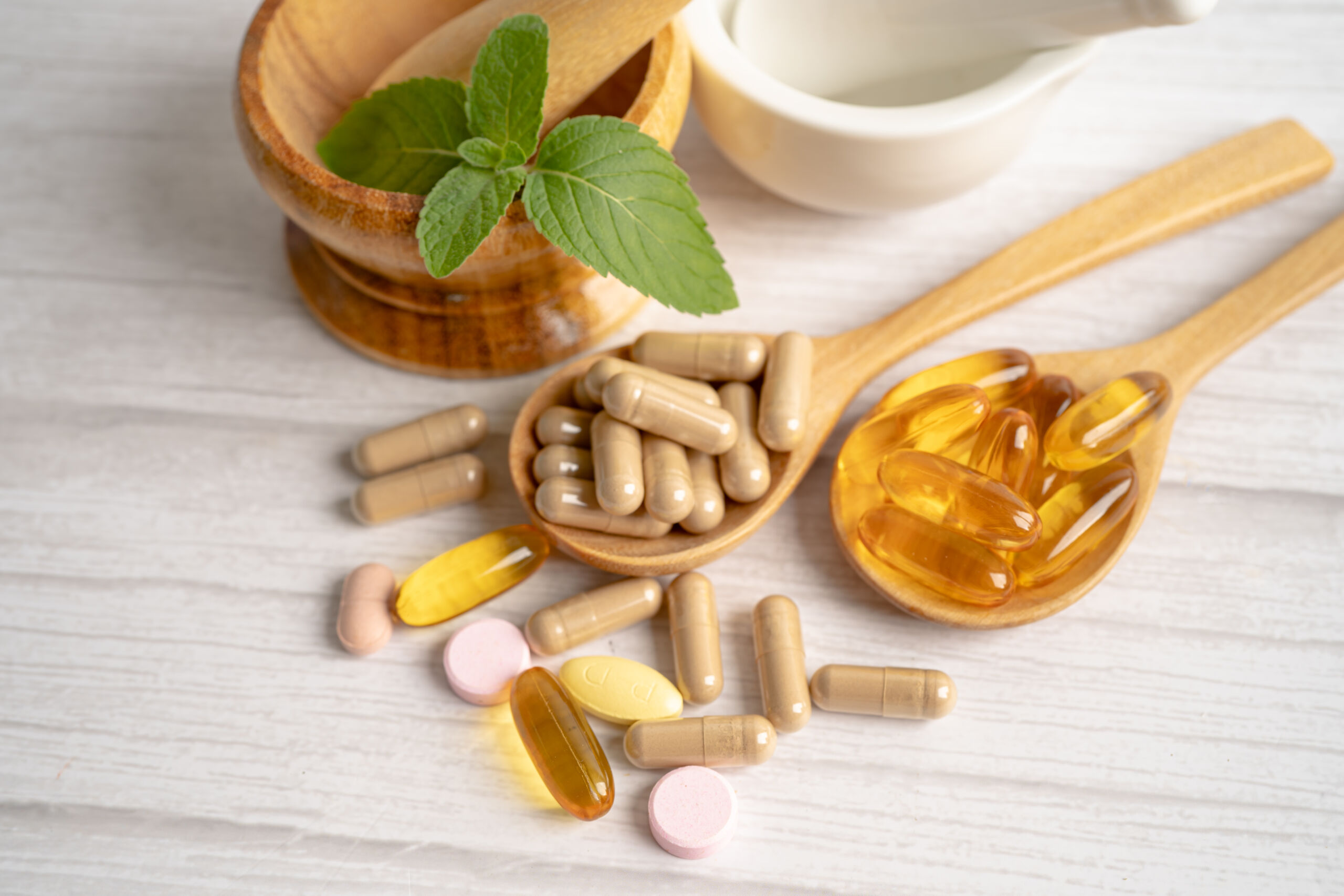Most women have experienced how the menstrual cycle affects day-to-day functioning, from emotional and energy fluctuations to pesky PMS symptoms like cramps and cravings.
While PMS is certainly a time where you may experience the most symptoms, it’s not the only point in your cycle where your body is experiencing changes. Your hormones fluctuate throughout your entire cycle in phases and influence how you feel from week to week as the month goes by.
 Your body’s responses to the hormonal changes associated with your cycle are an opportunity for you to listen and adapt — particularly in your lifestyle habits like exercise, because hormones and fitness are closely linked.
Your body’s responses to the hormonal changes associated with your cycle are an opportunity for you to listen and adapt — particularly in your lifestyle habits like exercise, because hormones and fitness are closely linked.
This process of adapting your lifestyle to the rhythm of your cycle is a concept rising in popularity called “cycle-syncing.” The idea is that you sync your forms of exercise and other lifestyle habits up with what your body is best suited to do in each phase of your cycle.
While many cycle-syncing recommendations are best used when individualized and given by your practitioner (especially if you deal with hormonal imbalances), there are some general guidelines that can apply to most women based on the patterns of a regular menstrual cycle.
To introduce the concept of syncing your cycle with your lifestyle habits, our functional medicine nurse practitioner Sarah Bird gives some background on what happens to your body during your cycle and baseline recommendations on movement and exercise throughout.
“No matter what, it’s always beneficial to switch up your exercise routine regularly to avoid overtraining, injury, and burnout,” says Sarah. “Your body can benefit from engaging in a wide variety of training types, and for women, it often responds better to certain types of exercise depending on where you are in your hormonal cycle.”
During each phase of the menstrual cycle, five main hormones — estrogen, progesterone, FSH, LH, and testosterone — do an intricate dance to stimulate and grow a dominant follicle in your ovaries, release an egg, build up the uterine lining, and then shed the lining.
These five hormones are the main characters in your cycle. Their concentrations rise and fall over the course of about 28 days, governing the phases of your cycle and maintaining a delicate balance to keep your cycle regular. That said, they also influence your emotional regulation, energy levels, physical and mental productivity, and more.
The estrogen hormone is the primary sex hormone in women, which prepares your body for potential pregnancy by directing ovulation, and develops female sex characteristics like breasts and body composition.
Testosterone, the primary sex hormone in men, exists in smaller concentrations in women and plays an important role in your cycle as well — mainly, helping the growth and repair of reproductive tissues and regulating mood, energy, and fitness.
The progesterone hormone assists estrogen in the preparation of your body for potential pregnancy by thickening the lining of your uterus to create a hospitable environment.
FSH (follicle-stimulating hormone) and LH (luteinizing hormone) are hormones sent from the pituitary gland to the ovaries. They direct the process of ovulation.
Your cycle has four phases through which you can track the patterns of each hormone and its effects on your body.
The Menstrual Phase
The one you probably know well, the menstrual phase occurs when an egg is released but not fertilized. The lining of your uterus, which your hormones caused to thicken throughout the last month, is not needed, and it is shed in the form of bleeding. This phase typically lasts 3-7 days, from the first day of bleeding until the last.
Just before and at the very beginning of the menstruation phase, three of those major hormones — estrogen, testosterone, and progesterone — are at their lowest concentrations. Due to low hormone levels and the contraction of your uterus during menstruation, many women experience low energy, cramping, discomfort, and mood swings.
You may notice more difficulty with intensive exercise during this period. Because your hormone levels are low and your energy is likely also low, it’s often more beneficial to focus on slower movement during your period, such as yoga, stretching, and walking, and to get plenty of sleep and rest.
 The low hormone levels also mean that your body is not necessarily able to build muscle as efficiently, so it may not always make sense to lift heavy weights and go for intense exercise at this time.
The low hormone levels also mean that your body is not necessarily able to build muscle as efficiently, so it may not always make sense to lift heavy weights and go for intense exercise at this time.
It’s also important to note that, especially if you tend to have a heavier period, you can help your body counteract the nutrient loss that often comes with bleeding. According to Sarah, “Eating whole foods with iron and minerals is important; try adding lentils, dark leafy greens, lean meats and seafood, tofu, and dark chocolate into your diet.” Taking a mineral blend supplement can also support the functioning of the body during this time.
The Follicular Phase
As your period is ending, your follicular phase starts and stimulates a new cycle in preparation for a potential pregnancy.
Another hormone comes into play here — FSH (follicle-stimulating hormone). FSH is released at the beginning of this phase and signals your ovaries to begin producing follicles, which contain immature eggs. This follicle production in turn causes your estrogen and progesterone levels to rise, beginning the process of thickening the uterine lining again. Testosterone levels stay low in this phase.
During your follicular phase, which typically averages between 11 and 16 days, you may experience higher drive, productivity, and energy levels thanks to the increasing estrogen. Your body is typically well-equipped for higher-energy forms of exercise at this time.
The Ovulation Phase
 Around day 14 of your cycle, you enter the ovulation phase. Your estrogen levels peak at this time, signaling another hormone, LH (luteinizing hormone) to be released, which stimulates ovulation — your ovary releases a mature egg that is ready to be fertilized.
Around day 14 of your cycle, you enter the ovulation phase. Your estrogen levels peak at this time, signaling another hormone, LH (luteinizing hormone) to be released, which stimulates ovulation — your ovary releases a mature egg that is ready to be fertilized.
Testosterone peaks at this time as well, while progesterone levels start to rise at the end of this phase. After estrogen peaks, it dips slightly.
Typically, the ovulation phase feels relatively similar to the follicular phase. You may continue to feel energetic and productive during this time, but make sure to listen to your body.
The Luteal Phase
When an egg is not fertilized during the ovulation phase, your body prepares to shed its lining and start the cycle over again, entering the luteal phase. Lasting between 12 and 14 days for most women, estrogen levels rise and progesterone levels peak and then fall sharply towards the end. Testosterone levels stay relatively steady before rising slightly at the end of the phase.
Because of the rising estrogen and progesterone levels, the luteal phase is typically the ideal time in your cycle to lift heavier weights, as the hormone production will help with greater hypertrophy, or muscle building.
That said, it’s important to fuel yourself accordingly — if you increase weightlifting at this time, make sure to supplement your diet with more protein and carbohydrates so your muscles are able to build and recover properly.
Towards the end of the luteal phase, the steep drop in estrogen and progesterone is what brings on PMS and its associated symptoms. You may begin to feel sluggish, bloated, moody, and tired. The hormone changes also affect your hunger signals, leading to cravings or increased appetite.
When PMS symptoms begin, it’s important, again, to listen. Nourish yourself well when you’re hungry, and lay off the heavy weights if you begin to feel tired — your symptoms are your body’s way of telling you that it’s time to slow down.
Listening to Your Body
 In reality, every woman’s hormonal cycle will vary a little bit. Cycles follow a general pattern, as we’ve explained, but individually, you may experience more or less of certain symptoms, or your body may respond differently to hormonal fluctuations.
In reality, every woman’s hormonal cycle will vary a little bit. Cycles follow a general pattern, as we’ve explained, but individually, you may experience more or less of certain symptoms, or your body may respond differently to hormonal fluctuations.
The key is to tune in to your own cycle. You will likely feel differently from phase to phase, and that’s normal.
Now that you have an understanding of the basics of the cycle, pay attention to the way you feel from phase to phase across several cycles. Tracking or making mental notes about what symptoms you experience, how energized or fatigued your body feels, and how different forms of exercise and nutrition habits make you feel may help you identify patterns.
Then, you can start to get a feel for what works and doesn’t work for you and sync your movement and nutrition to your cycle.
Above all, remember to listen to your body to take proper care of yourself. It’s okay to have compassion for yourself if you’re feeling lower-energy or tired. “Choosing activities that are in line with the rhythm of your body will benefit you more than pushing through, not just physically but also mentally and emotionally,” says Sarah.
If you’re looking for more guidance or want to take a deeper dive into your hormonal health, our functional medicine practitioners can support you with medical visits, specialty lab testing, and individualized recommendations.
Want to explore a root-cause approach to your symptoms and start feeling better?
PALM Health provides concierge medicine with functional medicine experts and convenient access to comprehensive wellness and recovery services. Our memberships give you access to a wide variety of wellness services, integrative therapies, and on-site healthcare.
Like what you’re reading? Stay connected with us.
Want to stay up to date on all things health and wellness? Subscribe to our mailing list to receive educational content about the latest topics in health, tips on living well from our experts, updates on events, and special offers.









